NEW SERIES OF INTERNAL REPORTS FROM UNDP
---------------
Discussion Note for the Operations Group
UPDATE ON KEY AUDIT OBSERVATIONS and INVESTIGATION COMPLAINTS
Background
In response to last year’s OAPR annual report DP2007/37 of June 2007, UNDP Management stated that OAPR will be requested to brief the Operations Group (OG) on a six-monthly basis on key and emerging audit issues as identified in the course of audits in order for Management to proactively address emerging systemic issues.
Consequently, OAPR is hereby presenting to the OG an update on the outcome of its audits as well as investigation complaints.
COUNTRY OFFICE AUDITS
During the 10-month period ending 31 October 2007, OAPR issued 37 audit reports pertaining to country offices (Figures 2 & 3 in Annex 1). This includes 9 DEX audits, 2 follow-up audits, and 2 special audits.
The distribution of the audit reports issued so far is comparable to that of the previous year, i.e. 32% Satisfactory, 38% Partially Satisfactory, 11% Unsatisfactory and 19% with no opinions.
Altogether, the 37 OAPR audit reports contained 755 recommendations, 59% of which were ranked high priority.
It is not expected that the results of improvements in policies and practices will be noticeable in the outcome of internal audits within a short period of time. This is primarily due to:
1) There is a time lag between the identification of a systemic issue, the formulation and implementation of a solution, and the production of desired results that are then identified during subsequent audits; and
2) In general, development activities have a long cycle, an average of 7 years. Improvements in practices are more difficult to introduce to ongoing development activities that it is the case for new initiatives
Internal Audit Observations (Figures 4 & 5 in Annex 1)
The highest number of audit recommendations remained the same compared to last year and are noted in the areas of:
1) Development services (171 of 755 or 23%);
2) Financial resources (147 or 19%);
3) Procurement (108 or 14%); and
4) Human resources (101 or 13%).
Altogether the 4 top areas mentioned above account for 69% of the total recommendations.
It is worth mentioning that among the specific issues, it is the “weaknesses in the recruitment process” that is the most prevalent among the country office audits.
Overall, the distribution between “high”, “medium” and “low” priority audit issues remains the same between 2006 and 2007 with 59% of the audit issues having a “high” priority. However, the same comparison by individual audit area shows that:
1) The “high” priority audit issues in the financial resources area decreased from 74% to 59% in 2007;
2) The “high” priority audit issues in the procurement area decreased from 63%% to 58% in 2007; and
3) The “high” priority audit issues in the HR administration increased from 56% to 60% in 2007
The above suggests that this year’s audits identified slight improvements in the area of finance and procurement but this was not the case in the area of HR administration.
The major causes of audit issues were identified to be noncompliance and lack of effective supervision (Figure 6 in Annex 1).
Key and Most Recurring Internal Audit Issues
Within the top 4 audit areas, the key and most recurrent issues are, as follows:
(1) Development Services
§ Weak system for monitoring and following-up on NGO/NEX audits: not having a system in place to ensure compliance with the audit scope, timely submission of NGO/NEX audits, and timely implementation of audit recommendations.
§ Inadequate project design, appraisal and approval process: inadequate or non-appraisal by the local programme advisory committee, non-inclusion of beneficiaries and other key stakeholders in the appraisal process, and project risks not being addressed in a systematic manner.
§ Ineffective project monitoring and evaluation: pertains mainly to not having a regular monitoring plan, non-use of project monitoring tools, and non-compliance with guidelines on project monitoring of development projects
§ Inadequate management of project inventory: misstatements in the inventory list, not updated fixed asset registers, incomplete documentation supporting the physical inventory, and non-adjustment of lost items.
(2) Financial Resources
§ Unresolved bank reconciliation issues: delays in the bank reconciliation process and, outstanding bank reconciliation items that have remained uncleared or unadjusted.
(3) Procurement
§ Weaknesses of the contracts, assets, and procurement committee (CAP): ineffective and/or a non-performing CAP, members of CAP unclear about their roles and responsibilities, weak competitiveness so as to increase best value for money.
(4) Human Resources
§ Deficiencies in the recruitment process for office staff, project staff, as well as consultants: non-transparent and non-competitive recruitment process, inadequate documentation to support recruitment, no reference checking, evidence of favoritism in the evaluation, excessive use of waivers, and non-compliance with HR rules.
Corporate Issues
A number of corporate issues were also identified. The significant ones are, as follows:
(1) Atlas implementation – the rights to override budgets in Atlas are granted to most of the Atlas user profiles and not restricted to, for example, users with an Approver Manager profile, and; ARGUS and Atlas user profiles are not synchronized.
(2) Procurement – The delegation of procurement authority was wrongfully re-delegated to the DRR without prior approval from the Chief Procurement Officer.
(3) Financial Resources – Need to issue clear guidelines as to the circumstances under which payments to local vendors may be made in hard currency; guidance on how to resolve distortion of project delivery rate and budget that is caused by constant exchange rate fluctuations and results in unrealized differences of exchange being charged to projects budgets.
(4) Development Services – There is a need to provide guidance on how to address the status of DEX projects that have been initiated before 31 December 2006 without an authorization for the use of the DEX modality.
NGO/NEX AUDITS
The following is to be considered an interim analysis as of 15 November 2007 because OAPR has not yet completed its review and evaluation of the NGO/NEX audit reports. About 10% of the audit reports are at various stages of completion of the OAPR review.
Nonetheless, the results of a final analysis are not expected to be significantly different from what is stated in this paper because OAPR gave priority to the review of reports submitted by COs which NGO/NEX audits included, in the past, serious shortcomings.
Receipt of NGO/NEX Audit Reports
| | Audits Planned | Audit Reports Received | Ratio |
| Awards | 1,867 | 1,743 | 93% |
| Expenditure | $2.1 billion | $1.8 billion | 86% |
As of 15 November 2007, OAPR has received NGO/NEX audit reports covering 93% of the awards and 86% of the expenditure of the audits that have been planned by
Compared to the previous year, there has been a slight improvement in the turnaround time for the submission of NGO/NEX audit reports to OAPR. By end of September 2007, OAPR had received 80% of the NGO/NEX audit reports compared to 74% as of September 2006.
Nonetheless, significant improvements remain necessary in the timely submission by 30 April 2007 for the great majority of NGO/NEX audit reports. In 2007, only 25% of the NGO/NEX audit reports were received by the deadline of 30 April compared to 11% in 2006. The situation as of end of May was 52% in 2006 and 57% in 2007.
The deadline of 30 April is primarily driven by requirements from the UN Board of Auditors, who require a good share of the NGO/NEX audit reports to be received and reviewed by OAPR so that they can put reliance on the audited NGO/NEX expenditure when finalizing their audit work by June or July of every year and for the purpose of expressing an opinion on UNDP financial statements.
In OAPR’s opinion, the difficulties in meeting the established deadline of 30 April are imputable to a variety of reasons, among them:
a)
b) Large volume of awards to be audited in a given year; and
c) Year-end closing of books and records and availability of the final expenditure figures not earlier than March
Qualifications in NGO/NEX Audit Reports
Based on the reviews that have been completed so far, the total net financial impact of “qualified”, “adverse” and “disclaimer” audit opinions is estimated at $14 million or about 1% of total expenditure, showing an improvement compared to the previous year where it amounted to $24 million or 1.5% of the audited expenditure.
Last year, there were a total of 27 country offices which NGO/NEX audits had qualifications. The comparison of the results of these same 27 country offices shows a significant improvement, in that their NGO/NEX audit results in 2007 amount to a net financial impact of only $3 million. In other words, a majority of this year’s NGO/NEX audit qualifications is attributable to country offices who did not have qualifications in the previous year.
Among the “new comers” this year with total net qualifications exceeding $1 million are the NGO/NEX audit reports submitted by country offices in
Evaluation of NGO/NEX Audit Reports (Figure 7 in Annex 1)
The OAPR evaluation of the NGO/NEX audit reports is done at three levels:
1) Audit outcome or gravity of the audit issues raised in the reports;
2) Adequacy of the scope covered by the NGO/NEX auditors; and
3) The effective administration of the audit exercise by the CO.
In terms of the outcome of OAPR evaluation of NGO/NEX audit reports ratings, the preliminary results indicate the following:
1) The evaluation of the gravity of the audit issues shows similar results to those of the previous year without any significant changes;
2) The adequacy of the audit scope has improved from 29% of satisfactory audit scope to 41% this year; and
3) The administration of the audit exercise has improved and is at 27% satisfactory compared to only 10% in the previous year
A more complete and accurate analysis will be obtained once OAPR has completed its review of the NGO/NEX audit reports.
NGO/NEX Audit Observations (Figure 7-9 in Annex 1)
The total number of audit observations issued that were considered of a high risk has decreased at 20% for fiscal year 2006, an improvement of 5 points. For the medium risk severity observations, there has been a 5 point increase or 44% and the low risk audit observations remained the same at 36% for both years.
Based on the 1,574 reports assessed as of 15 Nov 2007, the three areas with highest number of audit issues remain the same as in the previous year:
1) Financial management, 39% of total issues;
2) Record keeping systems and controls, 17% of total issues; and
3) Equipment management, 14% of total issues.
As the NGO/NEX audits are primarily financial audits, the area of “financial management” is unavoidably the one with the highest number of audit issues. It should be noted that this year, the share of high priority issues has dropped from 39% to 26% in this area.
The issues raised in this area of “financial management” of NGO/NEX projects mainly include: expenditure paid without approval, project advances made without signing agreements, expenditure made without approved budget, cheques payable to purchaser instead of supplier, long outstanding advances, differences between CDR and project records, expenditure exceeding budget, bank accounts not regularly reconciled, use of other funds to implement project activities, payment requests not properly authorized, payments exceeded contract terms, expenditure recorded for unapproved activities.
When reviewing the causes of audit observations, there was a decrease of four points in “compliance” as being the cause of the audit observations. Other causes stayed more or less the same for both years, in the range of two to three percentage points.
Headquarters Audits
Two special reviews on counterfeit US Dollar bills were conducted by OAPR in 2007. The reviews highlighted:
§ The absence of specific procedures regarding the management of office safes; and
§ Absence of oversight exercised by the Office of Finance and Administration or the Treasury Division on the management of safes in country offices and business units at headquarters
An audit report covering the activities of the Treasury Division that was issued on 9 November 2007 resulted in an “unsatisfactory” overall audit opinion mainly due to the following major observations:
§ Bank reconciliations not completed in a timely manner; unreconciled items accumulated and investigations not performed in a timely manner
§ The Atlas General Ledger system contains numerous incorrect balances dating back to January 2004, is not optimally configured, lacks adequate functionality and formal security measures
§ Overall lack of sufficient resources and limited guidance/guidelines within the Treasury Division
§ Inadequate or non-existent access controls surrounding Atlas, Treasury shared drives and other relevant Treasury servers
§ Inadequate segregation of duties exists within the Bank Reconciliations, Deposit Operations, Investments Unit and Cash Management processes
§ Very high reliance on the use of Excel spreadsheets for the conduct of Treasury functions and duties
An internal audit of BCPR has been completed and the related audit report is under finalization. In addition, a review of the Atlas system has been initiated in mid November 2007.
INVESTIGATION COMPLAINTS (figures 10 & 11 in Annex 1)
Starting July 2007, the investigation of harassment cases was transferred from OHR to OAPR. In absolute terms and not taking into account the addition of harassment cases, as of November 2007, a similar number of complaints was received by OAPR by comparison to 2006. This year however, the share of high priority in the new complaints has been higher, 33% against 26% in 2006.
Excluding the impact of the addition of harassment cases which accounts to 15 % of the new complaints received by OAPR in 2007, there has been a decrease in cases pertaining to treatment of personnel (17% v/s 24% in 2006) and procurement (16% v/s 20% in 2006).
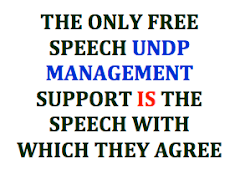




















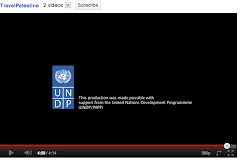





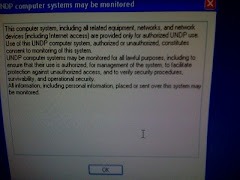










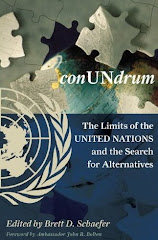

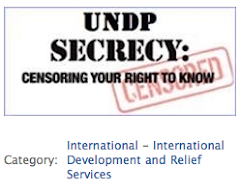







No comments:
Post a Comment